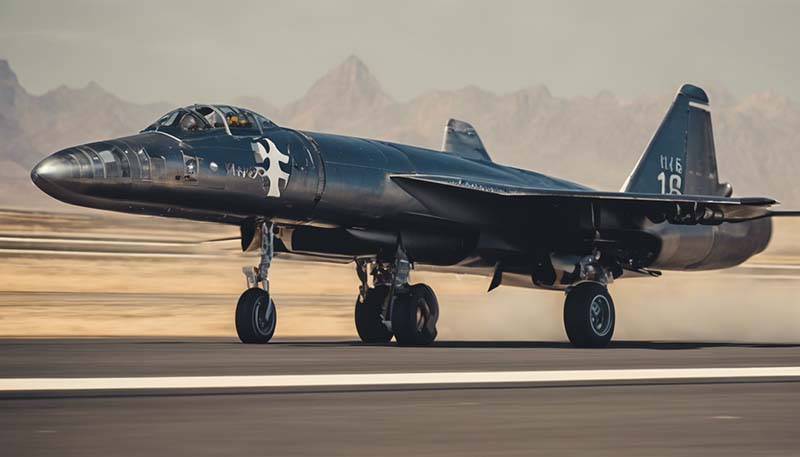The X-15 was an experimental hypersonic aircraft, part of the X-plane series, developed by the United States Air Force and NASA in the late 1950s and early 1960s. Designed to explore the frontiers of high-speed flight, the X-15 shattered numerous records and paved the way for future aerospace technology. In this article, we will delve into the history, design, and achievements of the X-15, and explore its lasting impact on the world of aviation and space exploration.
Background and Development
The origins of the X-15 can be traced back to the late 1940s when the United States military and NASA sought to develop an aircraft capable of reaching hypersonic speeds and exploring the upper limits of the Earth's atmosphere. The X-15 program was initiated in 1955, with the primary goal of investigating the aerodynamics, materials, and systems required for sustained high-speed flight.
The X-15 was a joint effort between the United States Air Force, NASA, and several aerospace companies, including North American Aviation, which was responsible for the design and construction of the aircraft. The X-15 was a rocket-powered, piloted aircraft, designed to reach speeds of over 6,000 miles per hour (9,656 kilometers per hour) and altitudes above 200,000 feet (61,000 meters).
Design and Features
The X-15 was a unique aircraft, featuring a small, streamlined fuselage with a slender, pointed nose and a delta wing design. The aircraft was powered by two XLR-99-RM-1 rocket engines, which produced a combined thrust of 57,000 pounds-force (253 kN). The engines burned a mixture of ammonia and liquid oxygen, allowing the X-15 to reach its incredible top speed of 4,520 miles per hour (7,274 kilometers per hour) and a maximum altitude of 354,200 feet (108,000 meters).
The X-15's cockpit was designed for a single pilot, who was required to wear a pressure suit similar to those used by astronauts. The aircraft was equipped with a range of advanced instruments and sensors, including a reaction control system for maneuvering in the thin upper atmosphere and a sophisticated navigation and flight control system.

Flight Test Program and Records
The X-15 flight test program began in 1959 and continued until 1968. During this time, the aircraft completed a total of 199 flights, with 13 different pilots participating in the program. The X-15 achieved several significant milestones, including the first manned flight into space by astronaut Joe Walker on August 22, 1963, and the first flight by a woman, Jerrie Cobb, on April 9, 1960.
The X-15 also set numerous speed and altitude records, including the world record for the fastest manned, powered flight and the highest altitude ever reached by a manned, powered aircraft. These achievements provided valuable data on the effects of high-speed flight on aircraft materials, structures, and human physiology, paving the way for the development of future aerospace technologies.
Legacy and Impact
The X-15 program played a crucial role in advancing the field of aerospace technology and laid the groundwork for the development of the Space Shuttle and other reusable spacecraft. The X-15's innovative design, materials, and systems were instrumental in shaping the future of high-speed flight and space exploration, and its achievements continue to inspire engineers and pilots to this day.
Many of the lessons learned from the X-15 program were applied to the development of subsequent experimental aircraft, such as the X-24 and the X-29, as well as to the design of modern fighter jets and commercial aircraft. The X-15's legacy also lives on in the ongoing pursuit of hypersonic flight and the development of new technologies that will enable humans to explore the edges of our atmosphere and beyond.
Leave Your Comments